|
|
|
HOME
|
US Navy -
ships
|
US Navy - air
units
|
USMC - air
units
|
International
Navies
|
Weapon Systems
|
Special Reports |
|
Royal Australian Navy Anzac class Frigate / FFH |
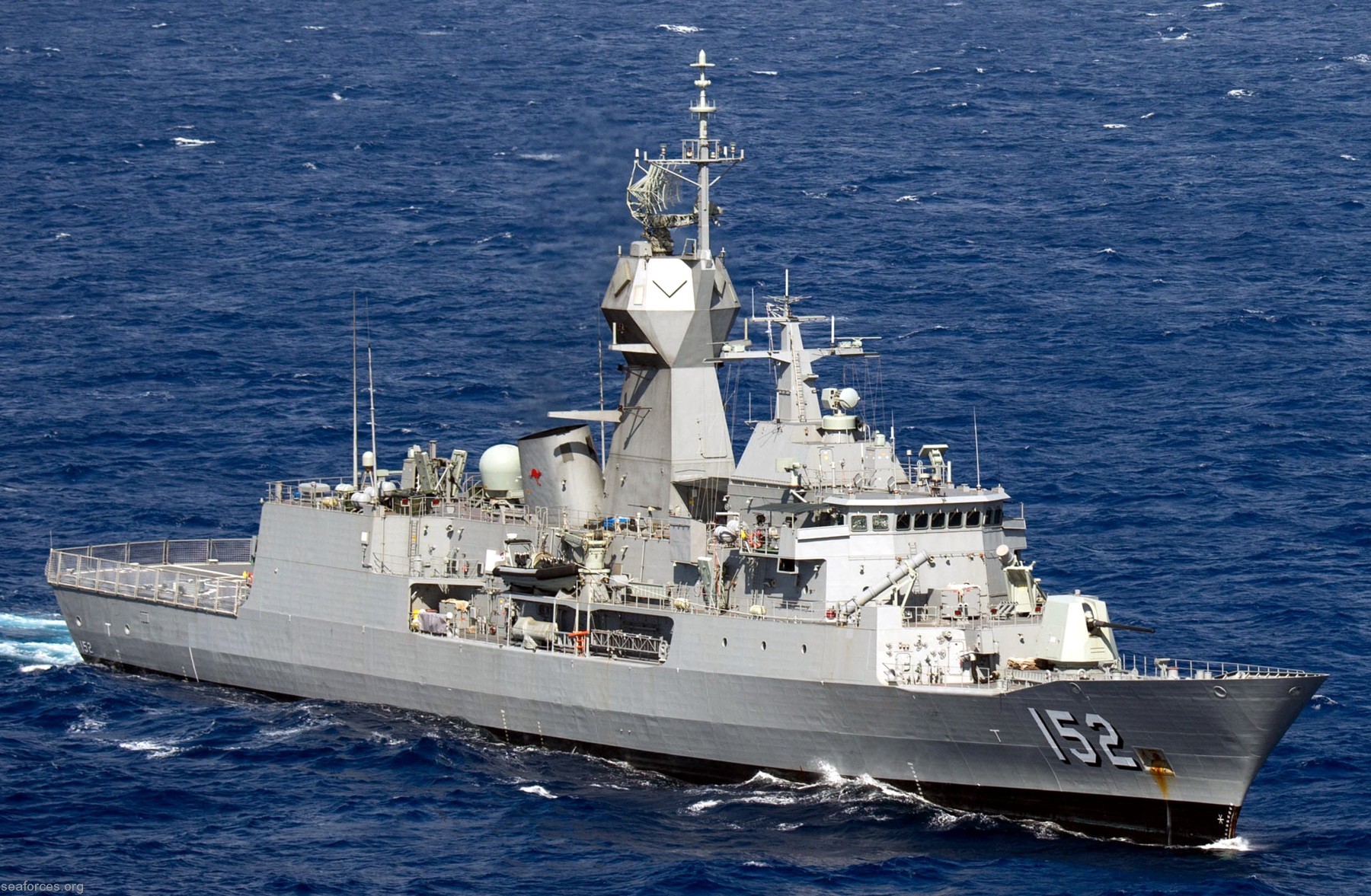 |
| 10/25 |
| Ships: |
|
FFH 150
HMAS Anzac FFH 151 HMAS Arunta FFH 152 HMAS Warramunga FFH 153 HMAS Stuart FFH 154 HMAS Parramatta FFH 155 HMAS Ballarat FFH 156 HMAS Toowoomba FFH 157 HMAS Perth |
| Specifications: |
|
Builder:
Tenix Defence, Williamstown, Australia
Length: 118 meters (387 feet) overall Beam: 14.8 meters (49 ft) Draft: 4.35 meters (14.3 ft) Displacement: 3,600 tons (full load) Speed: 27 knots (50 km/h) Range: 6,000 NM (11,000 km) at 18 knots (33 km/h) Complement: 177 Propulsion: CODOG (Combined Diesel or Gas) 1 x General Electric LM2500-30 gas turbine (30,172 hp / 22,500 kW) 2 x MTU 12V1163 TB83 diesel engines (8,840 hp / 6,590 kW, each) 2 shafts, 2 controllable pitch propellers Armament / fitted: Mk.41 Mod.5 Vertical Launching System (VLS) - 8 cells for RIM-7 Sea Sparrow SAM (1 per cell) RIM-162 Evolved Sea Sparrow Missile (ESSM) (4 per cell) 1 x Mk.45 (Mod.2) 5”/54 caliber lightweight gun 2 x Mk.32 Mod.5 triple-torpedo-tubes for Mk.46 torpedoes optional: 1 x Mk.15 Phalanx Close-in Weapon System (CIWS) 2 x Mk.141 missile launcher for up to 8 RGM-84 Harpoon SSM another Mk.41 Mod.5 Vertical Launching System (VLS) Aviation: flight deck and hangar for 1 helicopter (Sikorsky S-70B Seahawk or MH-60R Seahawk) Sensors and processing systems: Raytheon SPS-49(V)8 ANZ aerial search and long-range surveillance CEAFAR active phased array radar CEAMOUNT target illuminators Saab Systems Celsius Tech 9LV 453 combat data system Saab Systems Ceros 200 fire control director Kelvin Hughes SharpEyeTM I-Band navigation radar Thomson Sintra Spherion B hull-mounted bow sonar Thales UMS-5424 Petrel mine and obstacle avoidance sonar system Vampir NG infrared search & track system Mark 36 SRBOC launchers SLQ-25A towed torpedo decoy BAE Systems Nulka decoy launchers Rascal Thorn modified Sceptre-A electronic support measures Telefunken PST-1720 Telegon 10 radar intercept unit |
|
The Anzac class originated from the
RAN's New Surface Combatant (NSC) project, which began in the
mid-1980s to find a replacement for the RAN's six River-class
destroyer escorts. By 1985, various design briefs ranging from 1,200
to 5,000 tonnes (1,200 to 4,900 long tons) displacement were under
consideration, with the RAN emphasising anti-ship missile defence,
damage control, and ship survivability based on Royal Navy
experiences during the Falklands War. Eventually, the project
settled on a ship of approximately 3,600 tonnes (3,500 long tons)
displacement. At this time, it was also believed that Australia did
not have the capability to design a major warship from scratch, so
the decision was made to select a proven foreign design and fit it
with an Australian-developed combat system. In early 1986, a review
of policy regarding surface combatants saw the NSC classified into
the middle of three tiers: a patrol frigate designed to operate on
low- to mid-intensity operations in Australia's Economic Exclusion
Zone. Around the same time, the need to replace the RNZN's Leander-class frigate force with new warships was under consideration. The government saw maintaining a blue-water capable force built around three or four frigates as important, but the cost of acquiring and maintaining such a force was prohibitive. Alternate suggestions, such as reducing the RNZN to a coast guard-type force responsible for coastal and fisheries protection, replacing the frigates with smaller offshore patrol vessels, or reorienting the navy to primarily operate submarines, were made in several venues, but were seen as unacceptable loss in capability. Around the same time, the 1984-elected Fourth Labour Government of New Zealand implemented a nuclear-free zone, which incensed the United States of America and led to a deterioration of relations between the two nations, including the American withdrawal of support for New Zealand under the ANZUS security treaty. In response, the New Zealand government sought to improve ties with Australia; one such avenue was to promote military interoperability between the countries by standardising equipment and procedures where possible. The Australian NSC project was seen to have "virtually identical" requirements to the RNZN's proposed Replacement Combat Ship concept, and the need to replace the warships dovetailed with the need to improve relations with Australia. On 6 March 1987, a Memorandum of Understanding was signed by the two nations and RNZN representatives were invited to collaborate on the project. To recognise their involvement, the project was renamed the Anzac Ship Project, taking the name from the Australian and New Zealand Army Corps of World War I. The New Zealanders' involvement was structured to allow their involvement in the selection of the design and shipyard and explore options for New Zealand industry involvement: when the time came to commit, they could either continue cooperating into the construction stage of the project, independently order the ships from the designer, or abandon the project entirely. The proposed baseline characteristics called for a vessel capable of reaching speeds of 27 knots (50 km/h; 31 mph) and a range of 6,000 nautical miles (11,000 km; 6,900 mi) at 18 knots (33 km/h; 21 mph) based on a Combined diesel or gas (CODOG) propulsion system, able to operate in Sea State 5, and capable of operating a Seahawk-size helicopter. The ship was to be fitted with a 76 or 127 mm (3.0 or 5.0 in) main gun and an eight-cell launcher for a point-defence missile system, and fitted for but not with a torpedo system, anti-ship missiles, and a close-in weapons system. Tenders were requested by the project at the end of 1986, and 19 submissions were made, 12 of which included ship designs: the Netherlands' M-class (later Karel Doorman-class) frigate, a design based on the German MEKO 200 multipurpose frigate design, Italy's Maestrale-class frigate, the French F2000 design, the Canadian Halifax-class frigate, the German Type 122 (later Bremen-class frigate), Norway's Nordkapp-class offshore patrol vessel, the British Type 23 frigate (which was proposed by two different shipyards), South Korea's Ulsan-class frigate, and an airship design proposed by Airship Industries. By August 1987, a cost ceiling of A$3.5 billion (1986 terms) was established, and the submitted proposals were narrowed down in October to Blohm & Voss's MEKO design, the M class offered by Royal Schelde, and a scaled-down version of the British Type 23 proposed by Yarrow Shipbuilders. The Type 23 proposal was eliminated in November 1987, with the other two going into a development phase where the designer partnered with an Australian shipbuilder: Blohm + Voss with AMECON, and Royal Schelde with Australian Warship Systems. On 14 August 1989, the Australian government announced that AMECON had been awarded the tender for construction of the Anzac class based on Blohm & Voss' modified MEKO 200 design. Although both the MEKO 200 and M-class designs met the design requirements, the MEKO design was selected as more ships could be purchased for the budget cost. The A$5 billion contract was, at the time, the largest defence contract awarded in Australia. The decision was made despite ongoing debate in New Zealand over the project. New Zealand committed in principle to the purchase of two frigates plus the option for two more on 7 September, and the contract for the first two ships was signed on 10 November. In 1992, the Australian Force Structure Review contained plans to replace the three Perth-class guided missile destroyers and four of the six Adelaide-class guided missile frigates with air defence vessels. The initial proposal – to build an additional six Anzac-class frigates configured for wide-area anti-aircraft warfare - did not go ahead as the Anzac design was too small to effectively host all the required equipment and weapons. Instead, the RAN began to upgrade the Adelaides in 1999 to fill the anti-aircraft capability that would be lost when the Perths left service between 1999 and 2001, and began work on long-term replacement of the destroyers with what became the Hobart-class air warfare destroyer. Construction: On 14 August 1989, AMECON was awarded the tender to build the Blohm + Voss designed frigate. The frigates were to be constructed at the AMECON shipyard in Williamstown, Victoria (formerly Williamstown Naval Dockyard), but the modular design of the frigate allowed sections of the ships to be constructed throughout Australia and New Zealand, with final assembly in Williamstown. Each vessel was made up of six hull modules and six superstructure modules. All of lead ship Anzacs modules were assembled at Williamstown, but for later ships, the superstructure modules were fabricated in Whangarei, New Zealand, and hull modules were built at both Williamstown and Newcastle, New South Wales. Unlike previous shipbuilding contracts, AMECON was only contractually obliged to meet the navy's set commissioning dates for the ships; all other construction deadlines were to be determined at the shipbuilder's discretion. The second and fourth ships to be built were allocated to the New Zealanders. The third and fifth ships to be produced were earmarked for the RNZN in the event that approval to order two more frigates was given, with two more ships for the RAN to be added at the end of the production run. Project offsets meant that construction costs for the New Zealand ships were about 20% less than the Australian vessels. Steel cutting for the first ship, Anzac, commenced on 27 March 1992. Work on the first New Zealand ship, HMNZS Te Kaha, began in February 1993. Anzac commissioned into the RAN in May 1996, and Te Kaha into the RNZN in July 1997. In early 2002, the first four ships found to have microscopic cracks in the bilge keel and hull plating. The ships' hulls were repaired and reinforced. Construction of the final vessel, HMAS Perth, began in July 2003, with the vessel commissioning into the RAN in August 2006. Modifications: The Anzac-class ships were designed with a minimum standard of offensive and defensive weapons, with other equipment fitted "for but not with". The RAN and RNZN began to plan for upgrades to their frigates before all of the ships entered service; these upgrades were planned and executed on a national basis. The RAN commenced plans to improve their frigates' combat capability in 1996, with the Warfighting Improvement Program (WIP). Upgrades proposed under the WIP included installation of a phased-array radar, a second Mark 41 vertical launch system. The WIP was scrapped near the end of 1999, and plans for a less ambitious anti-ship missile defence (ASMD) upgrade were made. In 2004, Tenix, Saab, and the Department of Defence formed a Private Public Partnership to upgrade the anti-ship missile defence (ASMD) capability of the Anzac class, through the installation of CEA Technologies' CEAFAR and CEAMOUNT phased array radars, a Vampir NG Infrared Search and Track system, and Sharpeye Navigational Radar Systems. On 18 January 2010, Perth docked at the Australian Marine Complex in Henderson, Western Australia for the ASMD upgrade. Both of the frigate's masts were replaced, and the operations room layout was improved. Additional ballast was required to maintain stability, and the combined weight increase brought the ship's full load displacement to 3,810 tons. After completion in October 2010, Perth was used to test the modifications, with trials completed in July 2011. Approval to upgrade the other seven RAN Anzacs was granted in November 2011, with work on the A$650 million refits to begin in 2012. As of September 2015, five ships had completed the upgrade, with the last due to be completed by 2017. From Warramunga onwards, the frigates were launched with the ability to carry and fire the RIM-162 Evolved Sea Sparrow Missile (ESSM) as a replacement for the Sea Sparrow missile; these were quad-packed into the Mark 41 launcher for a payload of 32 missiles. Warramunga was the first ship in the world fitted with the ESSM, and the first test firing was conducted aboard on 21 January 2003. The modifications entered operational service aboard three ships in June 2004. A CEA Technologies solid-state continuous wave illuminator was also fitted as part of the ESSM system. From 2005 onwards, the RAN began fitting the Anzacs and the Adelaides with Harpoon Block II missiles in two quad-tube canister launchers. The Australian Anzacs were fitted for but not with the launchers, but the original planned location on 02 deck was found to be unsuitable, and the launchers were relocated to 01 deck, in front of the bridge. Around the same time, the RAN began to fit all frigates deploying to the Persian Gulf with two M2HB .50 calibre machine guns in Mini Typhoon mounts, installed on the aft corners of the hangar roof. Two TopLite EO directors are used with the guns. The Mark 32 torpedo tubes aboard the Australian frigates were originally fitted with American Mark 46 anti-submarine torpedoes, but these were replaced with the French-Italian MU90 Impact torpedo prior to 2008. Toowoomba was the first Australian ship to fire an MU90 torpedo, during a test firing in June 2008, and Stuart performed the first 'warshot' firing of an armed MU90. The RAN commenced tendering for a helicopter design to replace the Seahawks aboard the Australian Anzacs in 1996, with a contract for 11 Kaman SH-2G Super Seasprite helicopters signed in 1997. In addition to the Anzacs, the acquired helicopter also had to be operable from the class of offshore patrol vessels the RAN was planning to build with the Royal Malaysian Navy (Malaysia later withdrew from the plan, and the RAN acquired the smaller Armidale-class patrol boats, which were not helicopter-equipped), with a second contract to be signed for these at a later date. In order to get the best capability for the cheapest price, the Australian Department of Defence opted to have Kaman acquire 40-year-old SH-2F Seasprite airframes decommissioned by the United States Navy, and fit modern flight systems to the reconditioned airframes. This approach led to major delays, and the helicopters were found to be inoperable in low-visibility conditions. By 2006, ten of the helicopters had been delivered, but none were permitted to fly. The Super Seasprite acquisition was cancelled outright in March 2008. Following the acquisition of the Romeo Seahawk helicopter variant, modifications to the Anzacs began to embark the helicopter. Replacement: The RAN plans to begin removing their Anzacs from service from 2024 onwards. To replace them, a class of new frigates will be built under the SEA 5000 acquisition project. The frigates are predicted to have a displacement of up to 7,000 tonnes (6,900 long tons; 7,700 short tons), and although they will be primarily oriented towards anti-submarine warfare, they are expected to be capable of also operating against air, sea-surface, and land targets. Originally eight vessels were planned, but by August 2015, the number of planned ships had increased to nine, with an estimated cost of $20 billion. Construction is predicted to commence in 2020. The Abbott Government promised that the two-decade construction project will be headquartered in South Australia, with shipbuilding divided between ASC Pty Ltd in South Australia and BAE's Williamstown Dockyard in Victoria. On 18 April 2016, Prime Minister Malcolm Turnbull (Abbott's successor) confirmed that BAE Systems' Type 26-class, Fincantieri's FREMM-class and a re-designed F-100-class frigate designed by Navantia had been shortlisted to replace the ANZAC-class in Australia. The Prime Minister confirmed that any frigate will be built in Adelaide and incorporate an Australian CEA phased array radar. The program is estimated to be worth $35 billion. source: wikipedia |
|
images for more images go to the individual ship's page |
 HMAS Anzac (FFH 150) 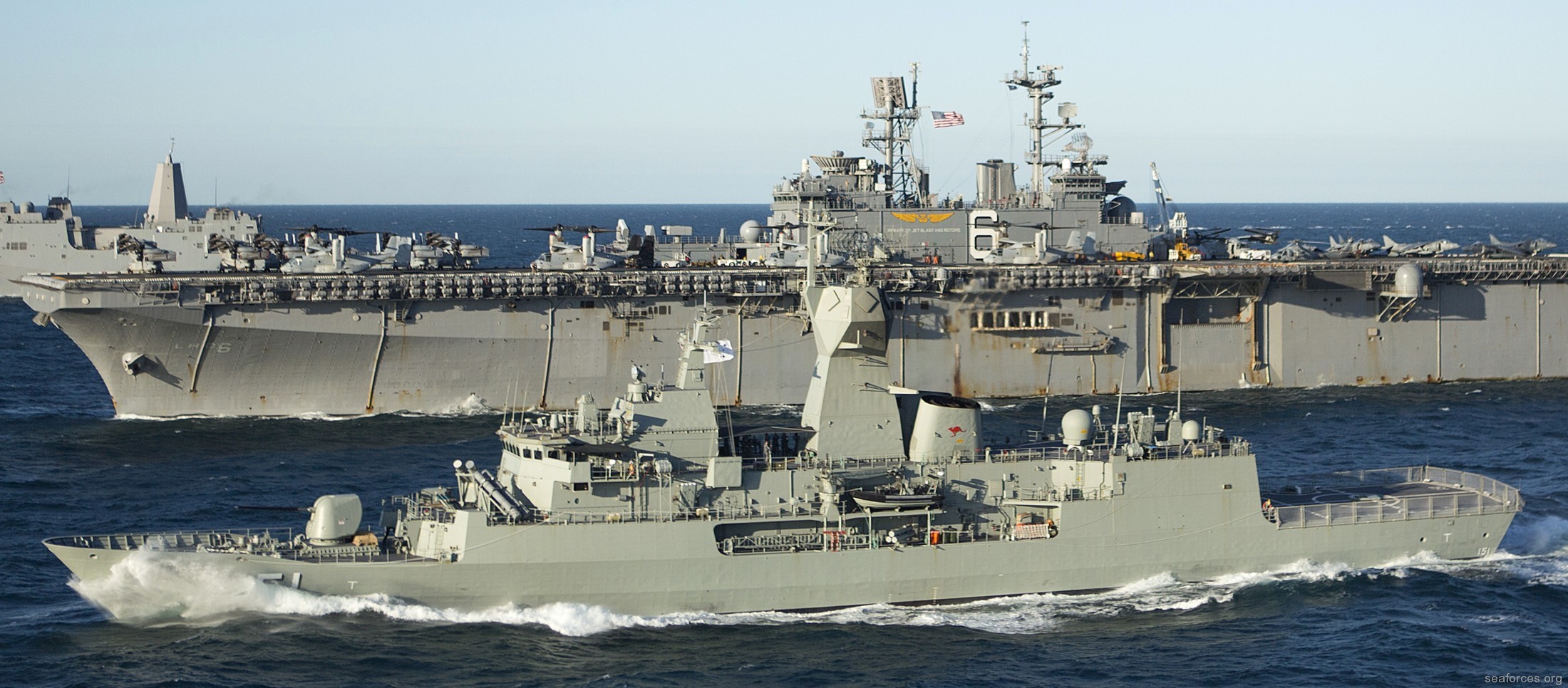 HMAS Arunta (FFH 151) 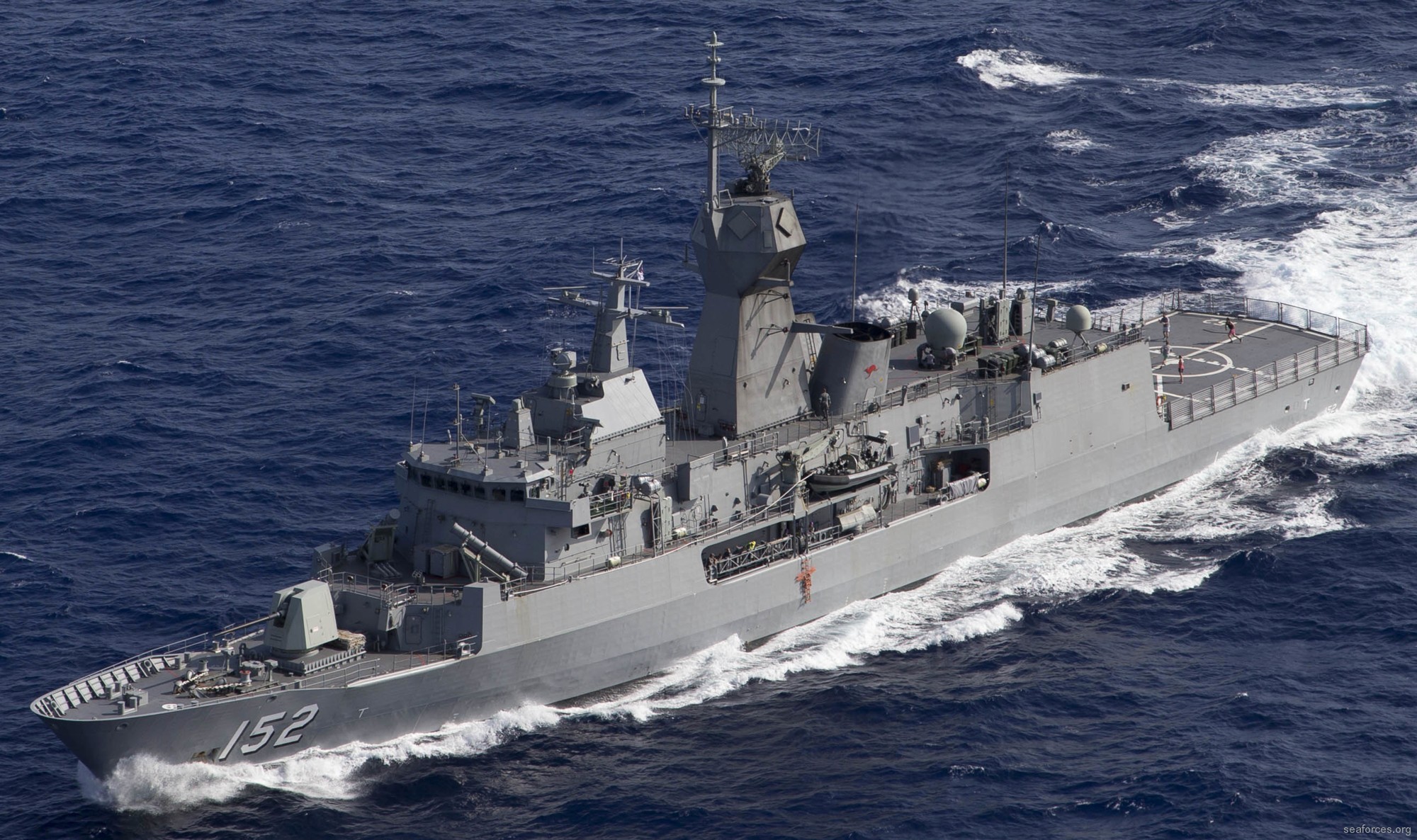 HMAS Warramunga (FFH 152) 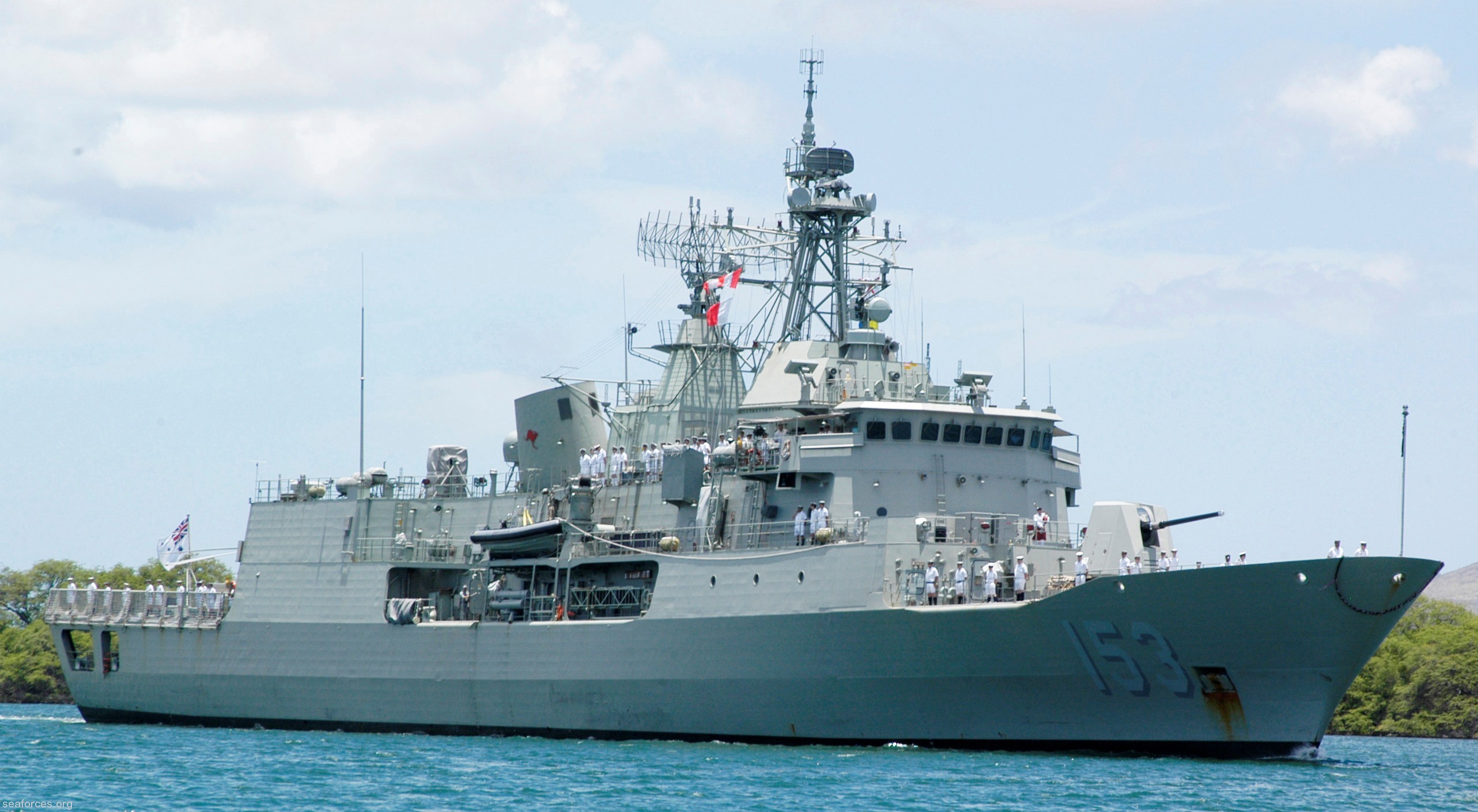 HMAS Stuart (FFH 153) 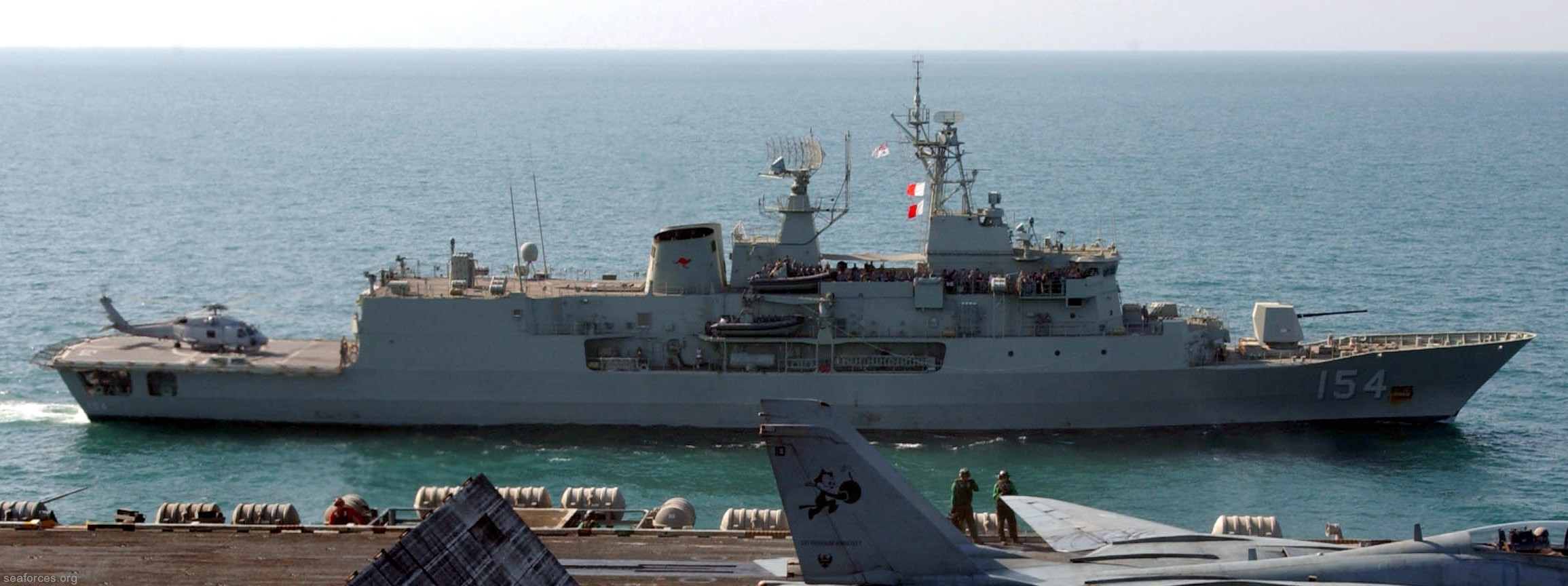 HMAS Parramatta (FFH 154) 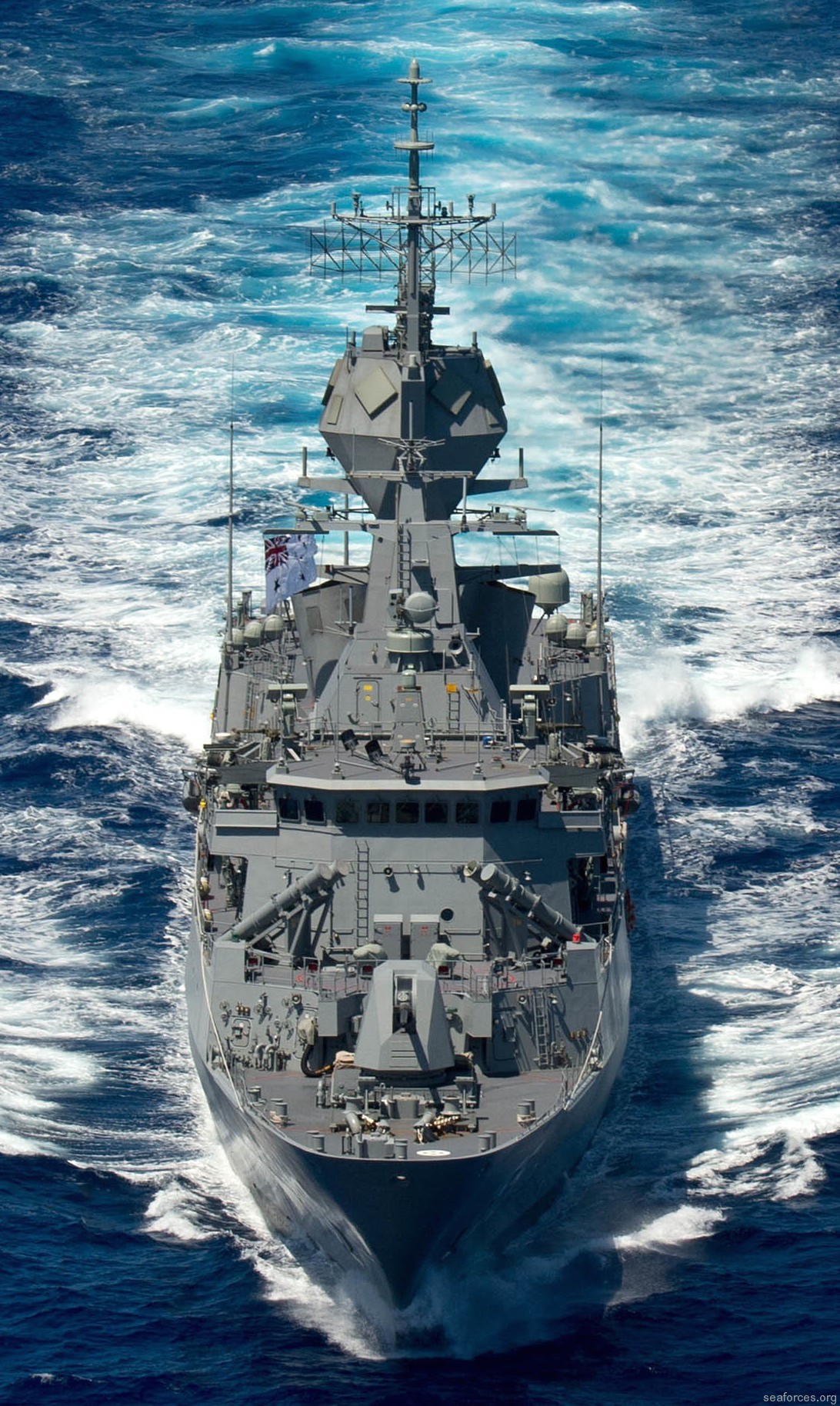 HMAS Ballarat (FFG 155) 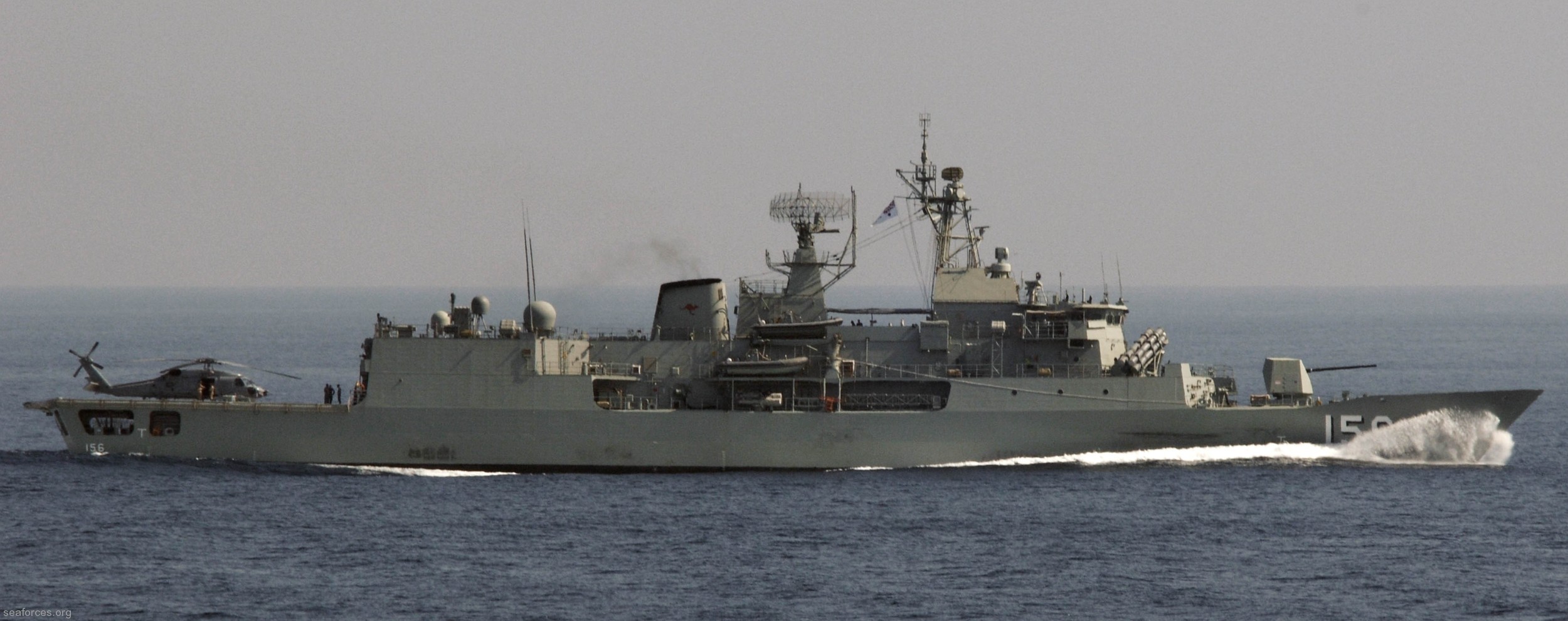 HMAS Toowoomba (FFH 156) 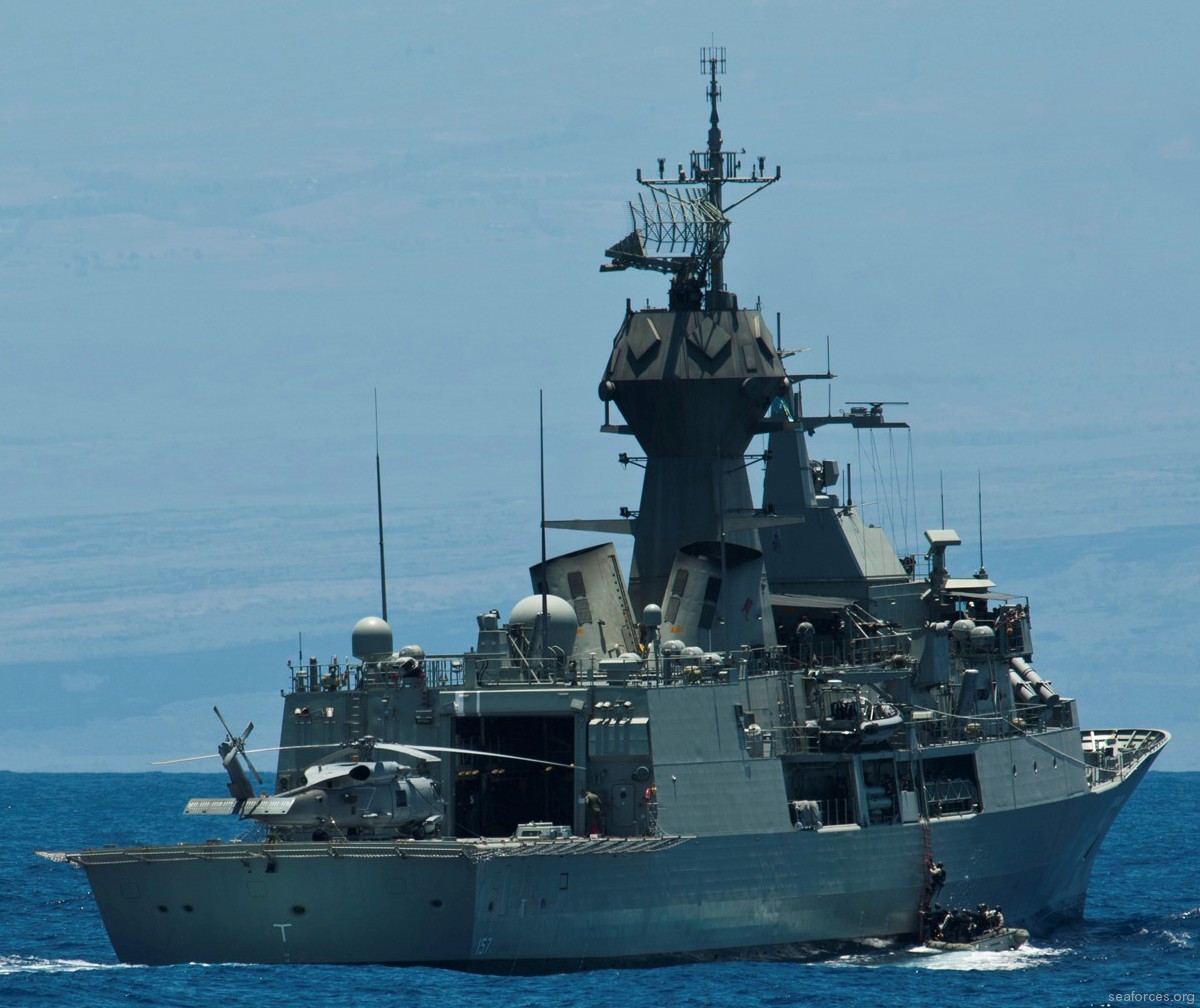 HMAS Perth (FFH 157) 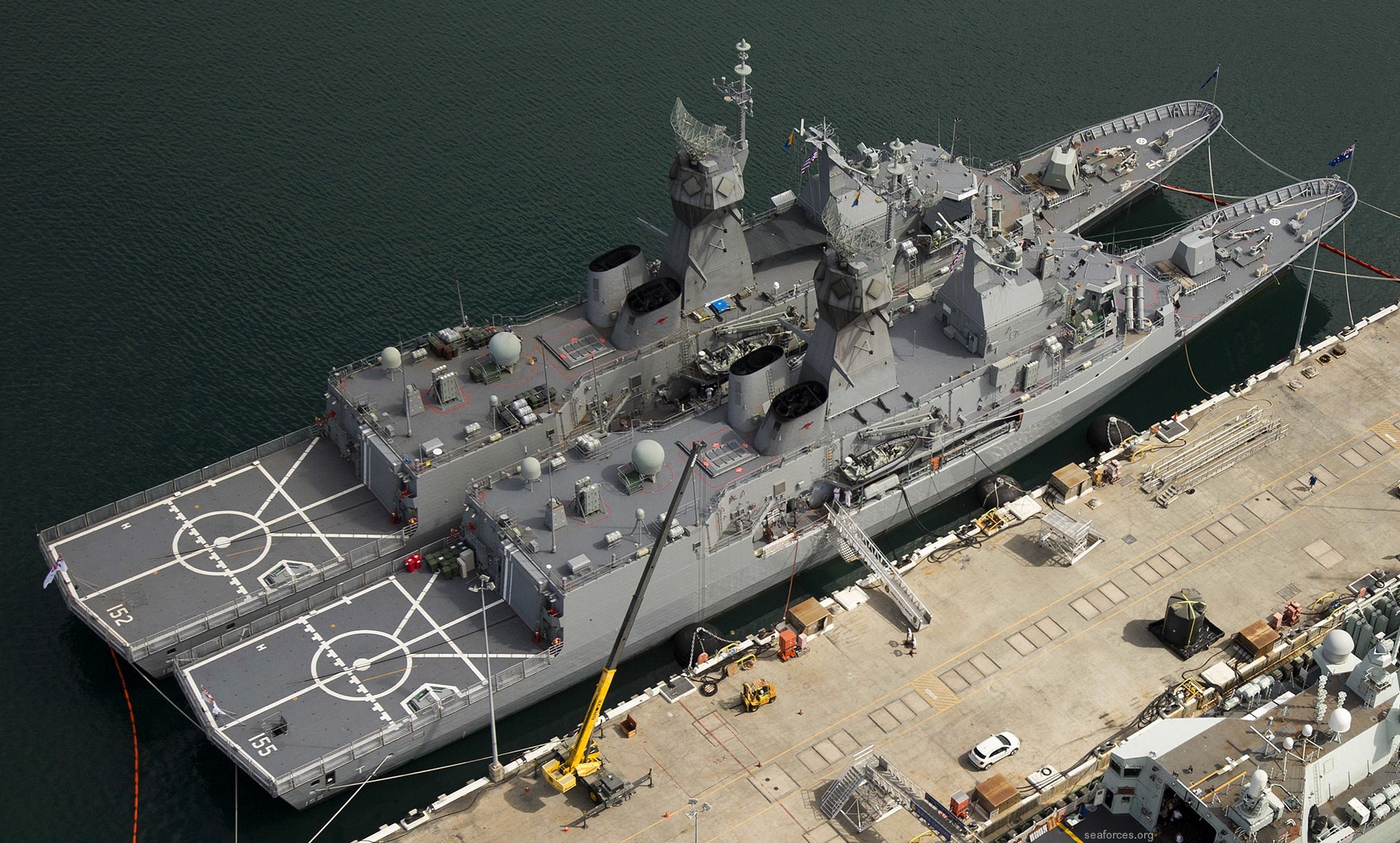 HMAS Warramunga (FFG 152) and HMAS Ballarat (FFH 155) 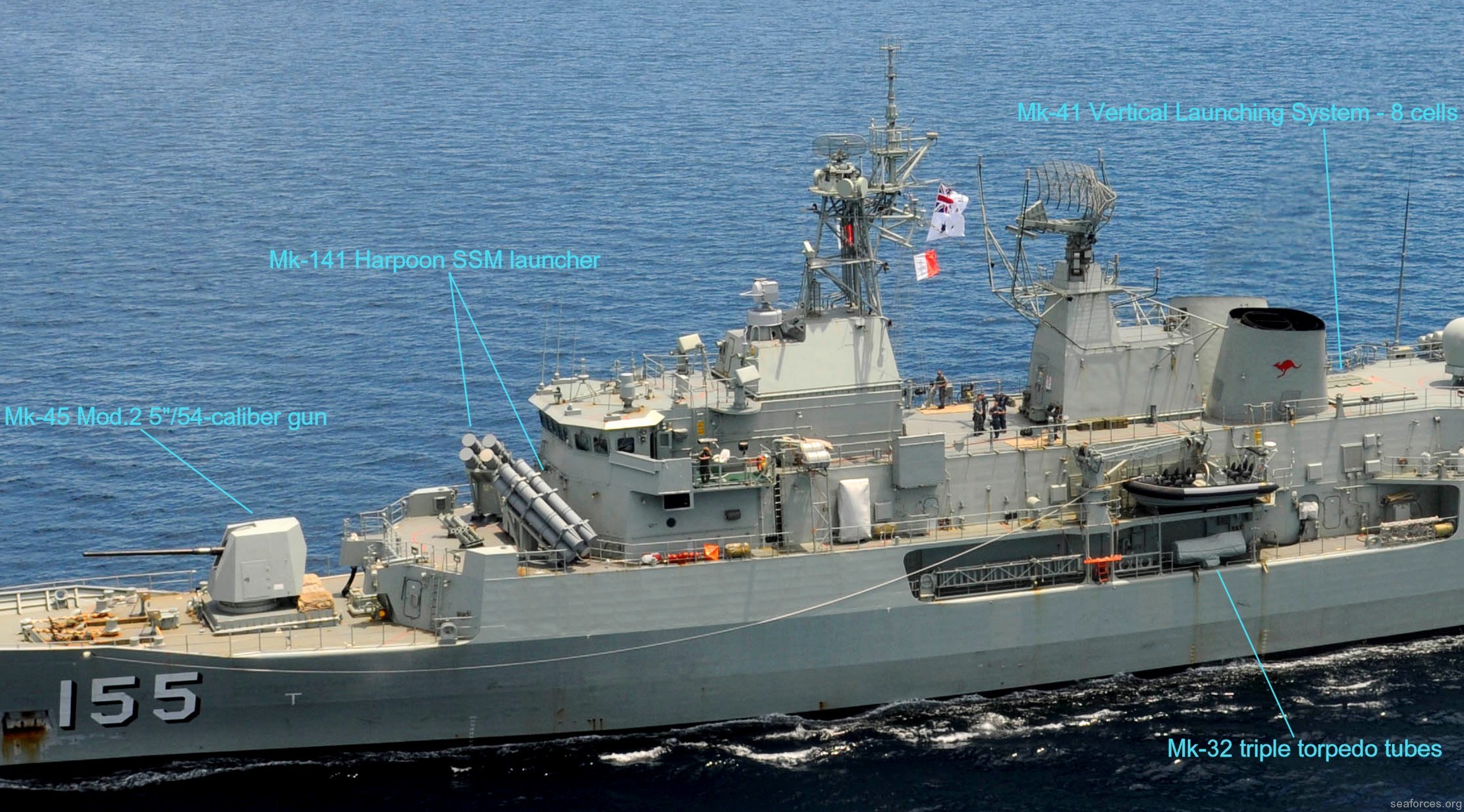 main armament 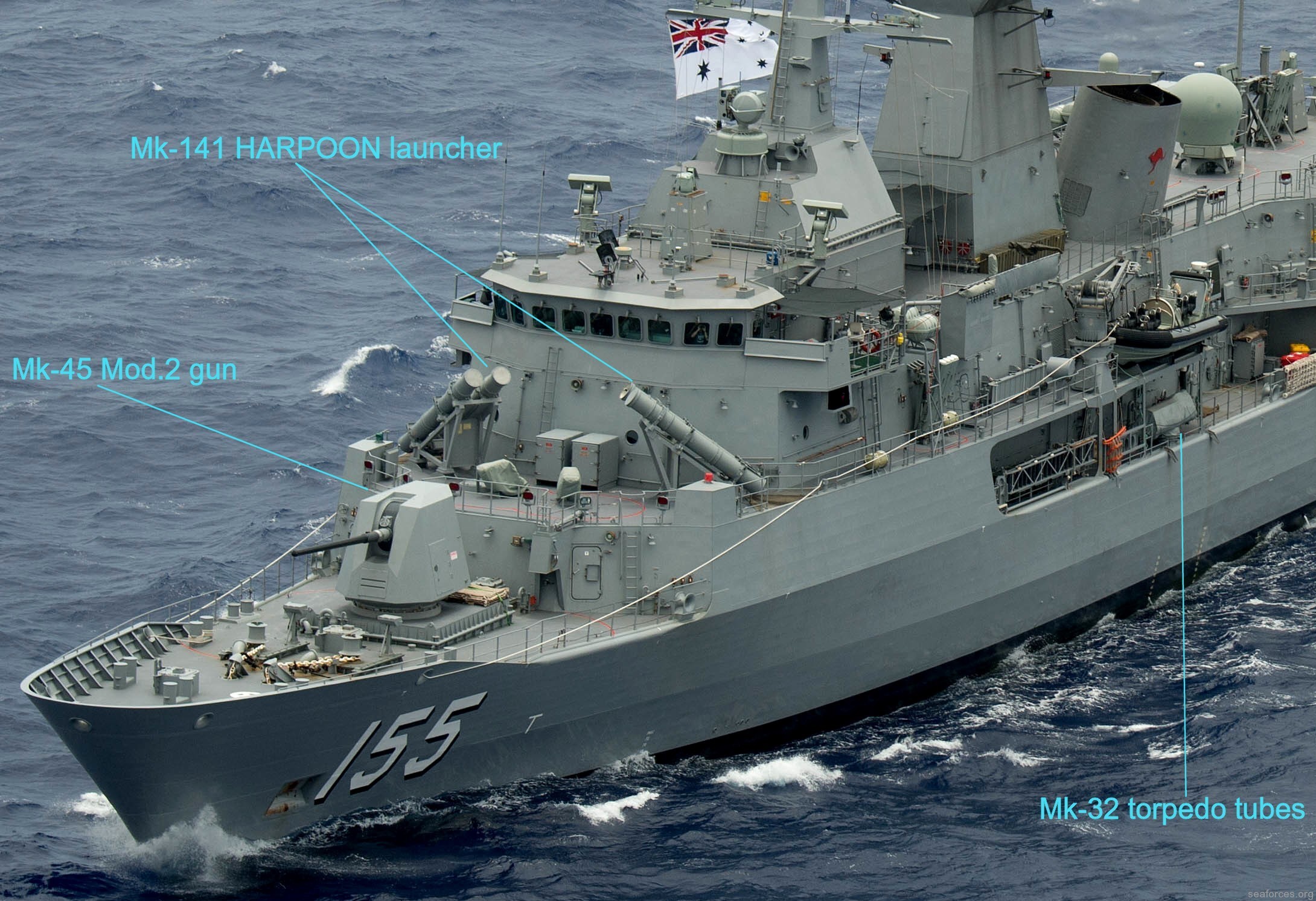 main armament 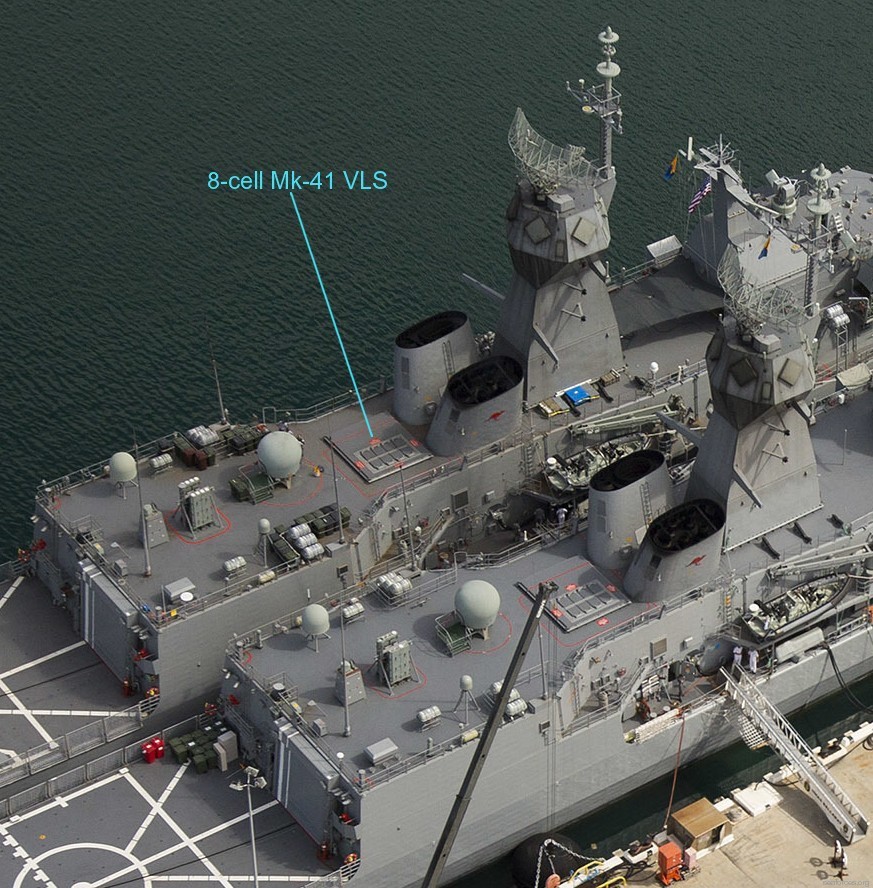 Mk.41 8-cell Vertical Launching System (VLS) for RIM-7 Sea Sparrow or RIM-162 Evolved Sea Sparrow (ESSM) Missiles 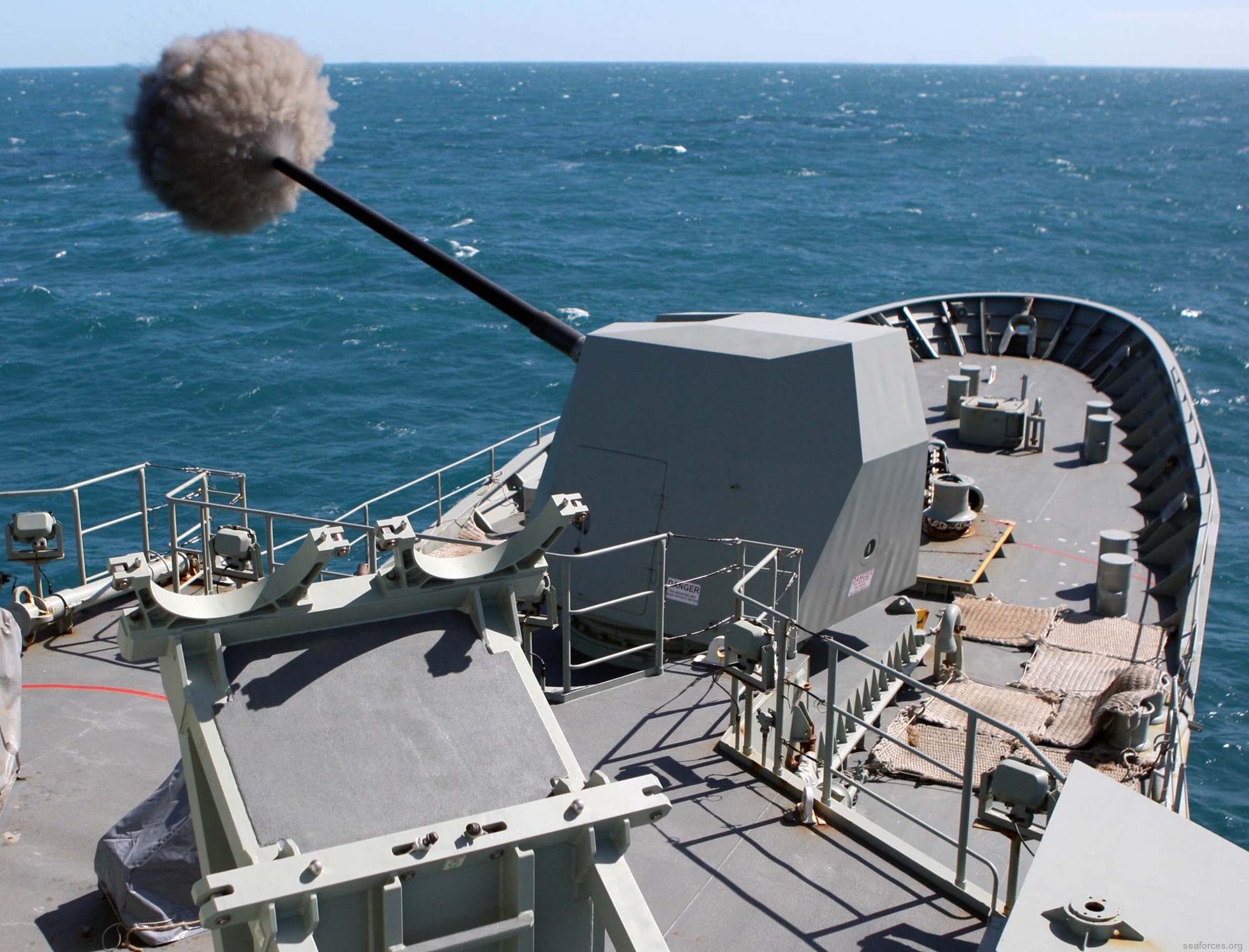 Mk.45 Mod.2 (5"/54 - 5-inches/54-caliber) gun 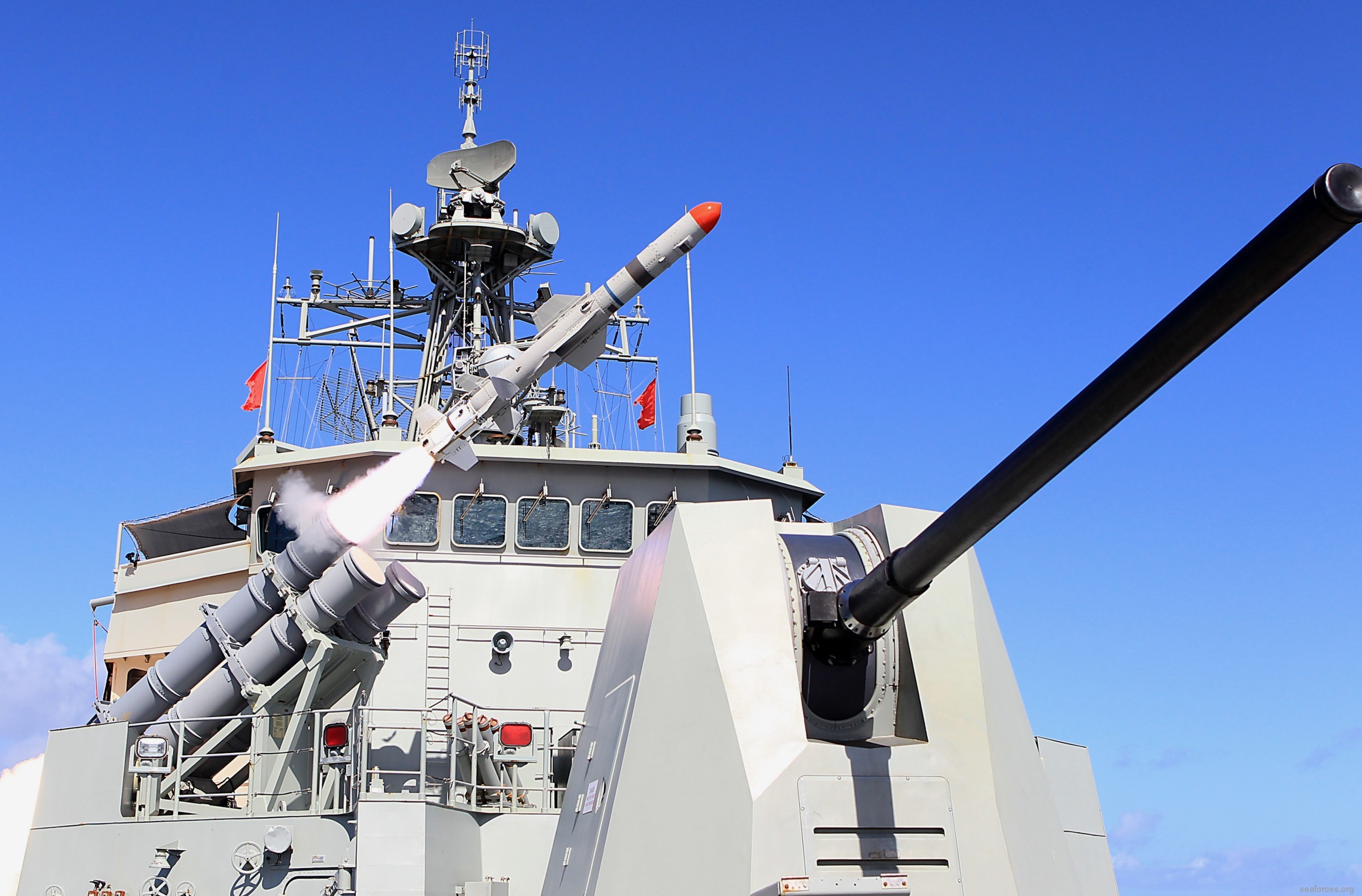 Mk.141 launcher for RGM-84 Harpoon SSM missiles 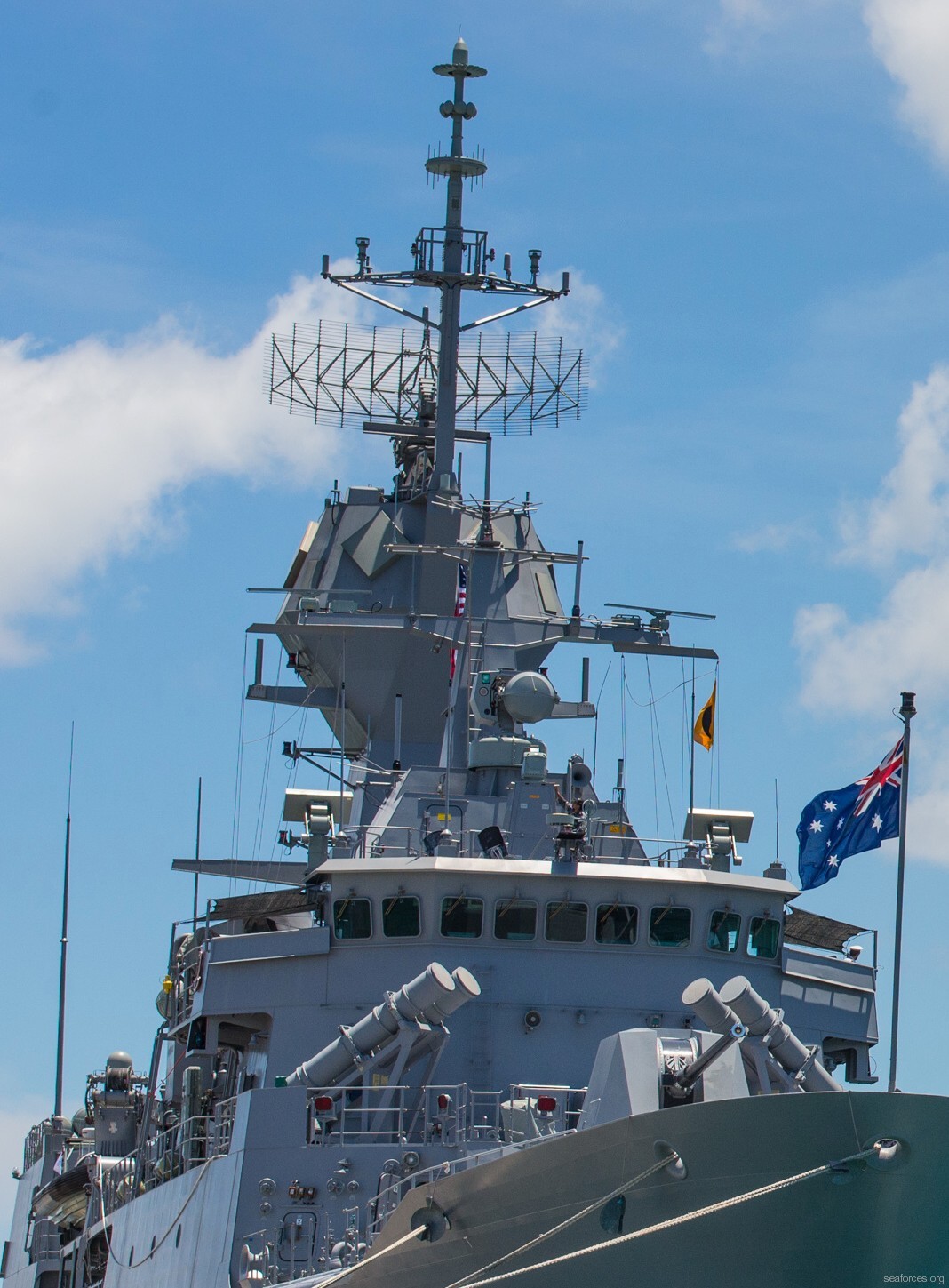 mast details |
|
|
seaforces.org
|
Royal
Australian
Navy start page
| |
